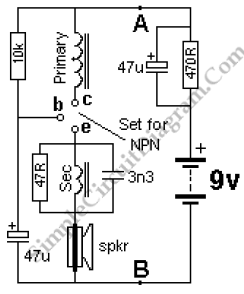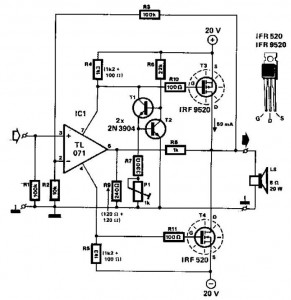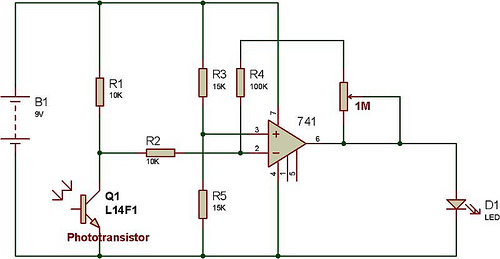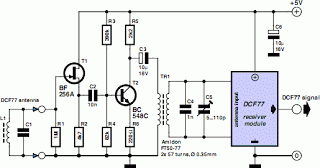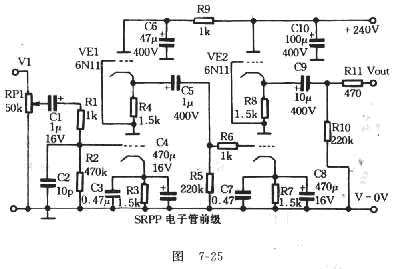
DC Coupled Transistor Amplifier
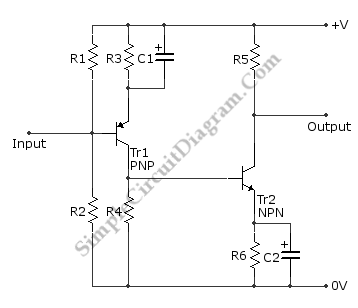
This is a directly coupled (DC) amplifier circuit. It is constructed using NPN and PNP transistors and is designed to amplify direct current (DC) signals.
The directly coupled amplifier circuit utilizes both NPN and PNP transistors to achieve its amplification. In this configuration, the output of one transistor directly connects to the input of the next stage, ensuring that the DC level is preserved throughout the amplification process. This design is particularly advantageous for applications requiring the amplification of low-frequency signals or DC levels, such as sensor outputs or audio signals.
In a typical implementation, the NPN transistor serves as the first stage of amplification, where it receives the input signal and amplifies it. The output from the NPN transistor is then fed into the base of the PNP transistor. This cascaded arrangement allows for higher gain while maintaining stability and linearity in the output. Biasing resistors are used to set the operating point of both transistors, ensuring they remain in the active region for optimal performance.
The circuit may also include coupling capacitors at the input and output stages to block any unwanted AC components while allowing the DC signals to pass. The power supply for the circuit should be adequately decoupled to prevent noise from affecting the performance of the amplifier. Overall, this configuration is effective for applications where DC signal fidelity is crucial, providing a reliable method for signal amplification.This is a The Directly (DC) Coupled Amplifier circuit. This circuit is built from NPN transistor and PNP transistor. This circuit is used to amplify a DC.. 🔗 External reference
The directly coupled amplifier circuit utilizes both NPN and PNP transistors to achieve its amplification. In this configuration, the output of one transistor directly connects to the input of the next stage, ensuring that the DC level is preserved throughout the amplification process. This design is particularly advantageous for applications requiring the amplification of low-frequency signals or DC levels, such as sensor outputs or audio signals.
In a typical implementation, the NPN transistor serves as the first stage of amplification, where it receives the input signal and amplifies it. The output from the NPN transistor is then fed into the base of the PNP transistor. This cascaded arrangement allows for higher gain while maintaining stability and linearity in the output. Biasing resistors are used to set the operating point of both transistors, ensuring they remain in the active region for optimal performance.
The circuit may also include coupling capacitors at the input and output stages to block any unwanted AC components while allowing the DC signals to pass. The power supply for the circuit should be adequately decoupled to prevent noise from affecting the performance of the amplifier. Overall, this configuration is effective for applications where DC signal fidelity is crucial, providing a reliable method for signal amplification.This is a The Directly (DC) Coupled Amplifier circuit. This circuit is built from NPN transistor and PNP transistor. This circuit is used to amplify a DC.. 🔗 External reference
